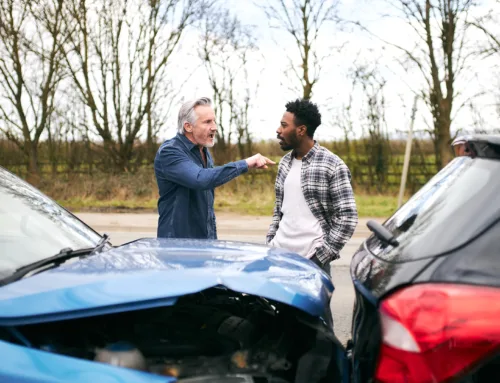Driving can be stressful. You have to pay attention to everything on the road. And sometimes you can’t avoid trouble. How would you react if the car in front of you stopped all of a sudden? You would hit the brakes, hoping not to crash. Your heart would be pounding, and you’d realize how quickly things can go wrong.
But what if there was an easy way to give yourself more time to deal with these situations? That’s where the 12-second rule comes in. It’s a simple but helpful way to make your driving safer and prevent car accidents.
How to Use the 12-Second Rule for Safer Driving
Do you know how long it takes, on average, to scan the road ahead when driving? The answer is 12 seconds. It’s not about counting seconds. It’s about scanning the road ahead to a point that would take about 12 seconds to reach. This distance gives you enough time to avoid sudden stops, turns, hazards, or other surprises.
The Logic Behind the 12-Second Rule
You may ask why the number is 12 and not 10 or 15. The 12-second rule is based on the average time a driver needs to spot a threat, decide on an action, and then do it.
Studies have shown that scanning the road 12-seconds ahead reduces the risk of accidents by giving drivers more time to plan and act. Using the 12-second rule can lower your chance of getting into trouble.
Advantages of Using the 12-Second Rule
- More Reaction Time: The biggest advantage is the extra time you have to deal with unexpected situations. Whether it’s a sudden stop, a person crossing, or something on the road, 12 seconds can save your life (or somebody else’s).
- Less Stress: Having that space can make driving more relaxed, especially in busy Atlanta traffic where sudden stops happen often.
Implementing the 12-second rule is straightforward and can be adapted to various driving conditions.
How to Use the 12-Second Rule?
Using the 12-second rule is not hard. Here’s a simple guide to help you:
- Be Regular: Make it a routine to always look at the road ahead.
- Change for Conditions: In rain, snow, or crowded traffic, think about scanning ahead 15 or even 20 seconds for more safety.
- Stay Focused: Avoid distractions like your phone or radio to make sure you can act fast.
The Importance of the 12-Second Rule in Atlanta
If you live in Atlanta, the 12-second rule is very useful. With the city’s crowded traffic and frequent construction zones, having that extra time to dodge trouble can make a huge difference.
It’s not just about avoiding accidents. It’s about making the roads safer for everyone. Using the 12-second rule in your daily driving can keep you and others safe.
Seeking Expert Guidance
The 12-second rule is a simple but powerful way to drive safely. As we drive on the busy streets of Atlanta, let’s all try to use this rule in our daily driving habits.
At Flanagan Law, we care about road safety and offer top-quality legal help for those who need it in Atlanta, Georgia. If you have any questions or need legal advice about road accidents, contact us today.


